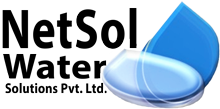Can Automation and Remote Monitoring Benefit Commercial RO Plants?
Commercial RO plants are essential infrastructure enabling access to freshwater resources from seawater, brackish aquifers and even recycled wastewater effluent. However, optimising these complex facilities for maximum efficiency, product water quality and system reliability remains an ongoing challenge. Many large-scale RO plants still rely heavily on manual operation, with operators adjusting settings and making decisions based on periodic sampling. This labour-intensive approach leaves ample room for human error, delays in recognising process deviations, and inefficiencies.
Fortunately, the convergence of automation, instrumentation, and remote monitoring/control technologies promises to modernise RO operations. By deploying intelligent control systems integrated with industrial Internet of Things (IIoT) connectivity, plant personnel gain powerful new capabilities. Let's explore the transformative advantages automation brings across key performance areas.
Precise Process Optimization
Even minor fluctuations in parameters like membrane pressures, cross-flow rates, pH or temperature can significantly impact RO system productivity, energy usage and product water quality. Automation platforms continuously monitor these variables across all equipment in real time. Advanced control algorithms make dynamic adjustments to conditions like pump speeds, flow rates, anti-scalant dosing and membrane staging configurations. This optimises the entire separation process, consistently achieving target permeate quality and recoveries while minimising energy expenditures. Automating these adjustments improves consistency compared to periodic manual intervention.
Predictive Maintenance & Analytics
Reactive maintenance practices where components get replaced upon failure are costly and inefficient for RO plants. Missed integrity issues quickly lead to fouling, scaling, reduced throughput and even membrane disposal if left unchecked. However, integrating IIoT sensor arrays enables real-time monitoring of differential pressures, chlorine levels, flows and other performance data across the plant. Predictive analytics detect anomalies like organic buildup or scale formation, enabling proactive cleaning and overhaul scheduling to prevent major downtime events. Machine learning models also identify operational blocks and inefficient energy usage patterns and optimise pretreatment. Digital twins virtually simulate plant conditions for monitoring impacts and optimisation testing. These data-driven capabilities enhance reliability and extend membrane life.
Remote Monitoring & Control
Many RO plants are in remote, harsh locations, making in-person oversight challenging and hazardous during upsets. Cloud-based monitoring and mobility solutions provide operators with centralized remote access and control capabilities from any location.
Unified dashboards display consolidated performance data and automated alerts and can initiate corrective actions remotely. Mobile apps empower field teams with work order details, asset history and operational checklists when onsite work is needed. Secure cloud connectivity enables collaboration between multiple facilities and OEMs to support issue resolution. Additionally, remote monitoring plays a pivotal role in cyber security for IIoT-connected facilities. Platforms enforce role-based access controls and proactively monitor cyber security postures to protect assets from malicious attacks or unintended system impacts.
Streamlinin?g Compliance & Reporting
RO plants must comply with strict reporting regulations around water quality, environmental discharge, chemical handling and more. Plant personnel often deal with fragmented data systems and paper-based processes, complicating demonstrations of compliance. Automated systems provide centralised environmental data management with built-in reporting templates covering all governing standards like the EPA's discharge rules. Blockchain integration prevents data tampering, ensuring trustworthy quality assurance records. Batch genealogy from integrated sample management simplifies coordinating sampling activities and compiling reports.
Labour Models & Staffing Strategies
With automation handling routine monitoring, control actions and calculations in real-time, the required staffing footprint changes. Fewer operators are needed for baseline remote monitoring and managing exceptions. However, engineers overseeing optimisation, data modelling, and supporting automation platforms take a larger role. Maintenance efforts shift from reactive repairs to planned outages. Workforce apps empower mobile operators to handle service requests across multiple facilities instead of being bound to control rooms. Overall automation positions RO workforces to focus on higher-level asset management, system analysis and remote decision support rather than repetitive procedural tasks. Automation insights also inform staffing strategies to maximise productivity and resilience across dispersed operations.
Conclusion
While reverse osmosis purification is well-established, opportunities abound for commercial RO plants to enhance performance through automation. Digitally transforming operations with process control systems and IIoT monitoring bridges a major technological gap between the status quo and peak potential.
Facilities integrating intelligent automation gain the ability to optimise separations for quality and energy efficiency in real-time precisely. Data-driven predictive maintenance models improve reliability, while remote monitoring centralises oversight across decentralised sites. Automated systems streamline compliance and lay the foundation for new labour strategies focused on analysis and asset management rather than manual monitoring. As the water scarcity crisis intensifies, commercial RO plants will play a critical role in unlocking new freshwater supplies. Embracing modern automation, process control, and remote monitoring technologies will be crucial to enhancing the company's environmental performance, energy footprint, and ROI. Plants integrating these innovations today will be best positioned for the resilient, efficient and compliant operations of tomorrow.
To explore customised commercial RO plants, Industrial RO plants, ETP or STP solutions for your needs in your areas and nearby regions, contact Netsol Water at:
Phone: +91-965-060-8473, Email: enquiry@netsolwater.com



